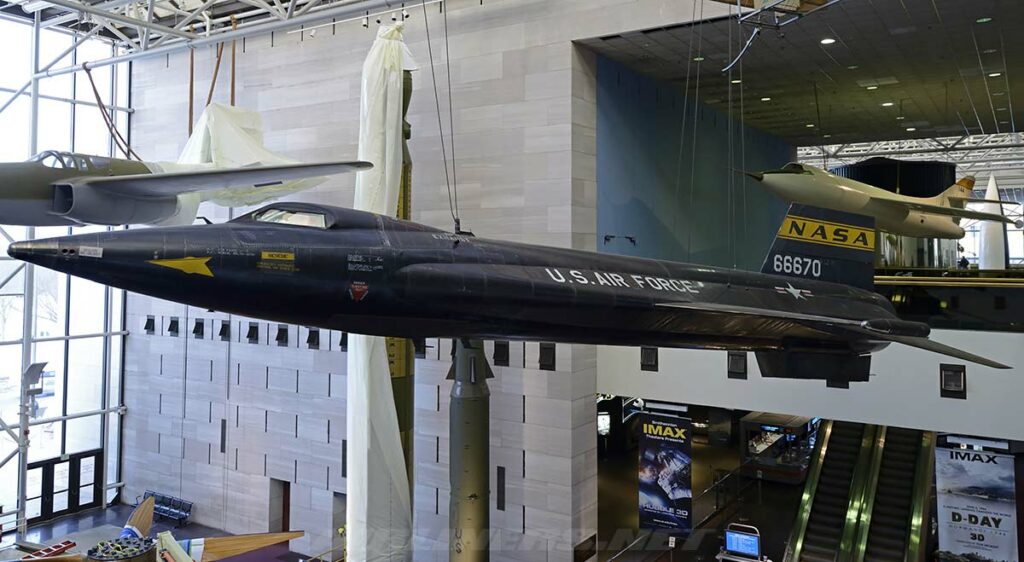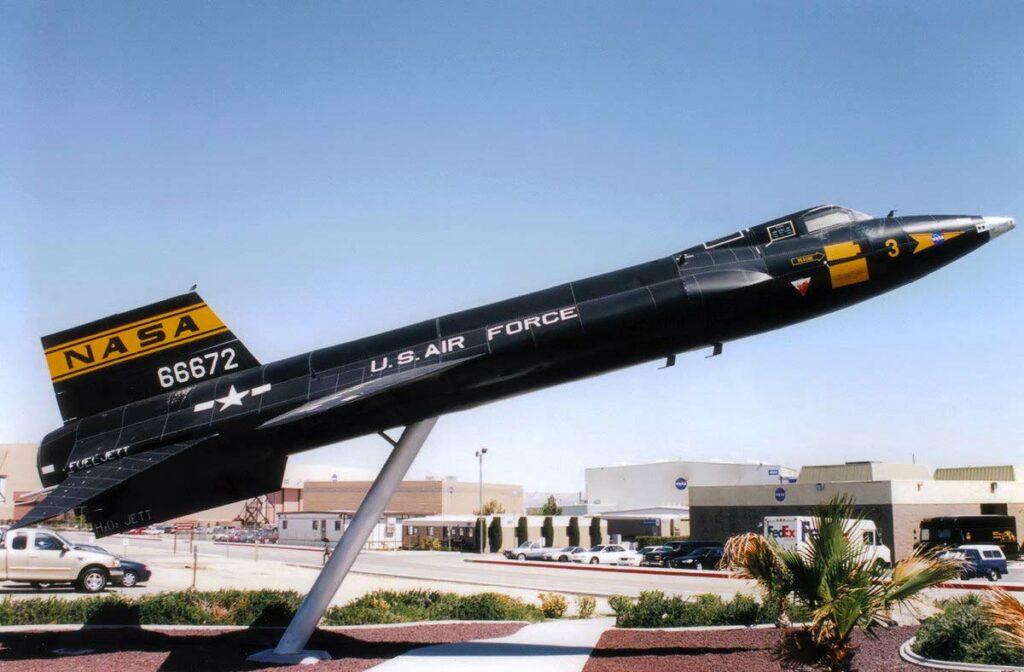The X-15, a rocket-powered aircraft, set records for speed and altitude, expanding our understanding of flight.
In brief
The North American X-15 was a rocket-powered aircraft, pioneering manned spaceflight and high-altitude atmospheric research. Developed in the late 1950s, it was a part of the X-plane series, designed to explore the limits of flight beyond the Earth’s atmosphere. The X-15’s sleek, black design featured a long, narrow fuselage and small, stubby wings, enabling it to reach the edge of space. Powered by a series of XLR99 rocket engines, it achieved unmatched speeds of Mach 6.7 and altitudes over 350,000 feet, setting records that stood for decades. Its research contributed significantly to the development of the Mercury, Gemini, and Apollo manned spaceflight programs, providing valuable data on hypersonic flight, high-altitude aerodynamics, and the effects of space travel on the human body.

History of the Development of the North American X-15
The North American X-15 project was initiated in the mid-1950s, during a period marked by rapid advancements in aviation and the beginning of the space race. The Cold War era propelled the United States and the Soviet Union to push the boundaries of technology, aiming to achieve supremacy in space exploration and military capabilities. The X-15 was developed in response to this drive, with the objective of exploring the possibilities of hypersonic flight and the fringes of outer space.
The program was a collaborative effort between the National Advisory Committee for Aeronautics (NACA), later known as NASA, the U.S. Air Force, the Navy, and North American Aviation. The X-15 was designed to gather data on flight conditions beyond the capabilities of existing aircraft, testing materials, flight controls, and human factors in extreme environments.
The X-15 made its first powered flight on September 17, 1959, piloted by Scott Crossfield. Its development marked a significant leap in aviation technology, bridging the gap between atmospheric flight and space exploration.
Design of the North American X-15
The X-15’s design was revolutionary, tailored to withstand the extreme conditions of high-speed and high-altitude flight. Measuring approximately 50 feet in length with a wingspan of 22 feet, its airframe was constructed from a nickel-chromium alloy, Inconel X, capable of withstanding temperatures exceeding 1,200 degrees Fahrenheit. The aircraft was powered by a series of XLR99 rocket engines, capable of producing 57,000 pounds of thrust, allowing it to reach speeds never before achieved by manned aircraft.
The X-15’s cockpit was pressurized and equipped with an ejection seat, and pilots wore pressurized flight suits to survive in the near-vacuum conditions at the edge of space. Its flight control system was adapted to operate both within the atmosphere and in the thin air of near-space, featuring conventional control surfaces for atmospheric flight and reaction controls for spaceflight.
While its design provided invaluable data and set numerous records, it also had limitations, including a high landing speed and limited maneuverability within the atmosphere, requiring skilled pilots and precise planning for safe recovery.
Performance of the North American X-15
The X-15’s performance was unparalleled, achieving a top speed of Mach 6.7 (4,520 miles per hour or 7,274 kilometers per hour) and a maximum altitude of 354,200 feet (107,960 meters). These achievements provided crucial data on aerodynamics, thermal protection, and human factors at the edge of space.
Compared to other aircraft of its time, the X-15 stood alone in its class, venturing into flight regimes that were previously unattainable. Its achievements paved the way for future spacecraft and space shuttle designs, offering insights into re-entry dynamics and control in a near-vacuum environment.
Variants of the North American X-15
The X-15 program produced three main variants of the aircraft X-15-1, X-15-2, and X-15-3. Each variant underwent modifications to enhance performance and research capabilities. The X-15-2, for instance, was rebuilt as the X-15A-2, featuring external fuel tanks and an ablative coating to withstand higher thermal loads, extending its speed and altitude capabilities. These variants allowed the program to explore a wide range of research objectives, from thermal protection systems to engine performance.

Military Use and Combat of the North American X-15
The X-15 was not designed for combat or military operations; its purpose was purely research-oriented, focusing on advancing aerospace technology and human understanding of spaceflight. It did not carry armaments, nor was it involved in military conflicts. Instead, its contributions to high-speed and high-altitude flight research had significant implications for both military aircraft development and space exploration technologies.
The North American X-15 remains one of the most significant achievements in aerospace history. Its development and flights expanded the boundaries of aviation and spaceflight, contributing to our understanding of flight in the Earth’s upper atmosphere and the edge of space. The data gathered from the X-15 program informed the design and operation of future spacecraft, including the space shuttle, and cemented its legacy as a cornerstone of human space exploration. Its record-setting performances in speed and altitude stand as a testament to the ingenuity and courage of all those involved in the program.
Back to the experimental aircraft section.